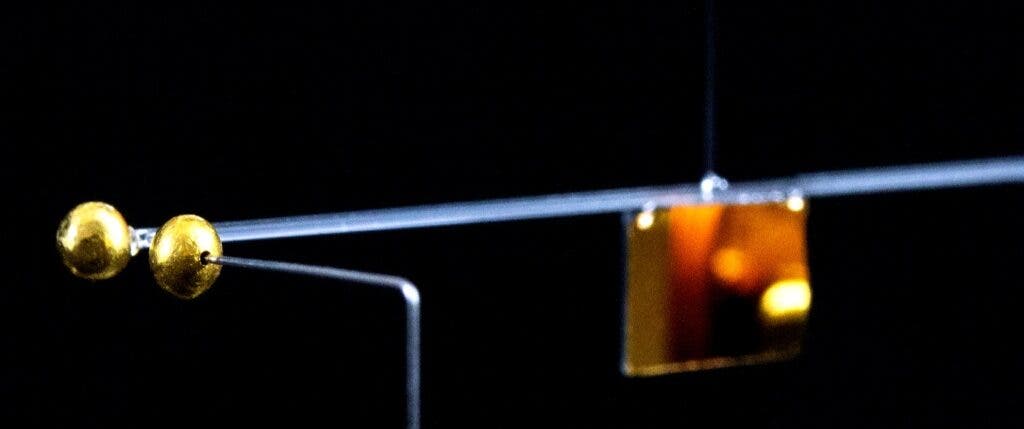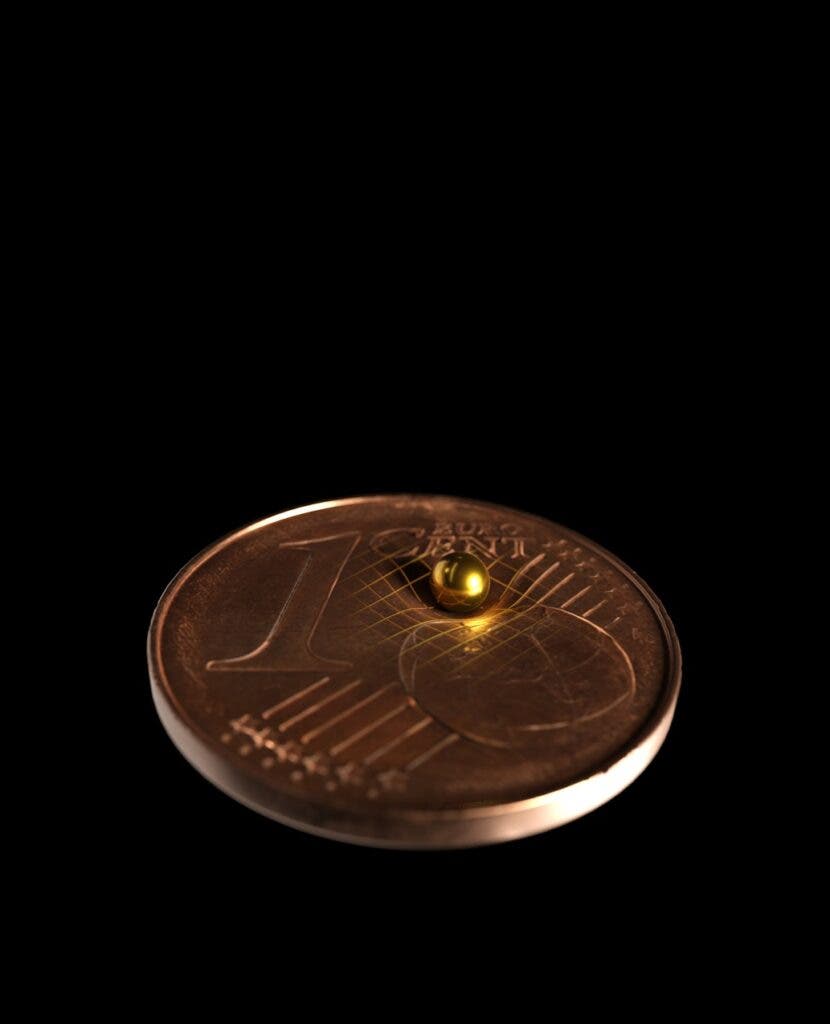
Physicists at the University of Vienna have managed to measure the gravitational field between two tiny gold spheres with a radius of merely 1 millimeter. In doing so, they’ve effectively measured gravity over the smallest distance to date and probed the nature of gravity at one of the smallest scales that our instruments permit.
Testing the boundaries of fundamental physics
Our knowledge about the subatomic composition of the universe is summarized in what is known as the Standard Model of particle physics. The Standard Model describes both the fundamental building blocks out of which everything is made and the forces through which these blocks interact. There are twelve basic building blocks that we know of (six quarks and six leptons) and four fundamental forces (gravity, electromagnetism, and the weak and strong nuclear forces). Each fundamental force is produced by fundamental particles that act as carriers of the force. For instance, the photon, which is a particle of light, is the mediator of electromagnetic forces.
The behavior of all of these particles and forces is described with the utmost precision by the Standard Model, with one notable exception: gravity.
By testing the coupling force of gravity between very small objects it may be possible to shed more light on what’s missing in our standard model of physics in order to account for gravity’s disconnect from quantum theory.
However, it’s just proven extremely challenging to describe gravity microscopically. This is one of the most important problems in theoretical physics today — finding a quantum theory of gravity.
This is where this new study may come into play.

For their research, the team at the University of Vienna led by quantum physicist Markus Aspelmeyer devised an experiment designed to isolate gravity as a coupling force between two tiny gold spheres, each with a mass of just 90 mg.
“The most fundamental questions in physics were always the ones that motivated me most. With this experiment we are already charting new territory, looking into long-standing puzzles like dark energy and fifth forces. The prospect of contributing to the question of gravity must be quantized, even if this is still a long way to go, is highly fascinating as well. As a first step to do this we established techniques to measure small gravitational forces and confirmed the known laws of gravitation on smaller scales than ever before,” Jeremias Pfaff, a physicist at the University of Vienna and co-author of the new study, told ZME Science.
This was actually a lot harder than it sounds, as the team had to overcome a number of painstaking challenges.
“A pendulum able to measure such small acceleration must be extremely
delicate. Building the first few prototypes, we had to insert an almost
invisible tungsten wire into the 10-micrometer hole of a hollow core
glass fiber – which took us hours upon hours – something I surely won‘t
forget,” Pfaff said.
But in the end, it all paid off. The setup was so sensitive that even tiny disturbances such as the rumble of passing-by buses, cable cars, and even earthquakes thousands of miles away could be detected.
To minimize external disturbances, the setup was encased in a Faraday shield that blocks electrostatic forces. One of the gold spheres was connected to a vacuum chamber to minimize seismic and acoustic effects.
The results weren’t surprising, confirming Newtonian physics in that the gravitational force between the two tiny objects depends on their masses and distance.
In the future, the team plans on improving the sensitivity of their experimental setup in order to probe gravitational coupling in objects with an even smaller mass — at least 1,000 times lighter and even shorter distances.
“Why is this interesting? Gravity is omnipresent in our daily lives, and yet our understanding of this phenomenon is far from complete! Experiments that investigate gravity at such small scales explore “terra nova” and may shed new light on its fundamental nature. Even though tackling these deep scientific questions is not motivated by an instant technological benefit, the process of discovering the underlying principles of nature is deeply rooted in human curiosity and hence of interest for everyone,” Pfaff concluded.
The findings appeared in the journal Nature.






